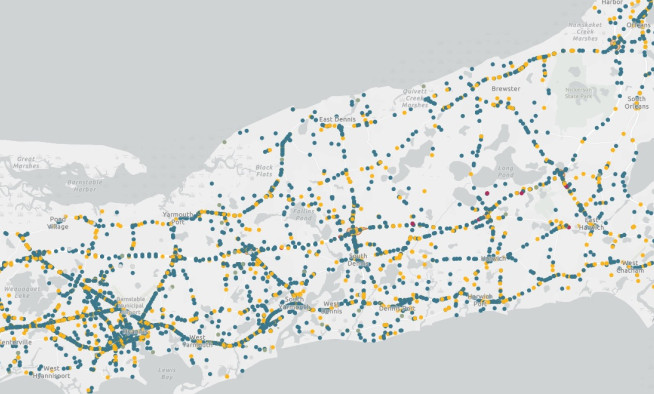Study ties housing ‘monoculture’ to increase in cost-burdened households
A new study prepared for the Cape Cod Commission ties a lack of housing that meets the region’s life stage and income needs to a significant increase in cost-burdened households over the next 10 years.
The data-rich report prepared by Crane Associates and Economic and Policy Resources (EPR), both of Vt., confirms the complex and unique pressures at play in the Cape Cod housing market. The study projects that without changes in the housing supply to meet life stage preferences, more than half of year-round households could experience housing cost burdens by 2025.
Titled “Regional Housing Market Analysis and 10-Year Forecast of Housing Supply and Demand,” the report provides objective baseline data on the state of housing on Cape Cod, with a look 10 years down the road.
“These findings should be used as a foundation for more analysis and to inform local and regional policies related to housing opportunity and jobs,” Jeff Carr, President, EPR.
The study used a gap analysis between what residents can afford and what’s available in the market as an indicator of housing cost stress. It represents the number of existing households spending 30% or more of monthly income on housing, and are therefore expected to be home cost burdened.
From the 2015 baseline year, the study shows the greatest housing stress is felt by those earning 80% or less than Barnstable County’s median income. In 10 years, the effect on the lower end of earners increases and deserves continued attention. More striking, however, is how housing stress climbs through higher tiers of income. By 2025, the greatest increase in burdened households are with those earning 100% to 120% of the projected median income.
The high demand for seasonal units combined with a housing “monoculture” of single family homes constrains housing options for those looking to enter the market or downsize.
“We recommend that Cape Codder’s plan for life stages through better urban design and consider planning for a housing product that doesn’t exist,” said Michael Crane, President, Crane Associates. “Smaller, Cape Cod ‘style’ units, ideally in community centers, walkable to amenities, with storage, are needed for downsizing seniors and active young people.”
The study makes a number of recommendations for the Commission to consider as it develops new housing policies. These will be considered in the broader context of the Regional Policy Plan update to align all regional policies and planning efforts.
“This isn’t a problem we can build our way out of under the regulations of the past,” Cape Cod Commission Executive Paul Niedzwiecki said. “If we create the right environment and appropriate opportunities for higher density, we could see the market respond and close these gaps.”
Working with existing data sets and some developed specifically for the study, the Housing Market Analysis provides a level of insight not previously available for Barnstable County. The demographic and economic model developed by Crane Associates and EPR was refined with the guidance of experts from Provincetown to Falmouth. The resulting forecast is an expression of what could be, given the best understanding of local land use constraints.
Data was developed for the county as a whole, as well as for subregions -Upper, Mid, Lower and Outer Cape – and each of the 15 Cape towns. This deeper dive shows that the greatest changes will be in towns that start with a better balance between wages and home prices.
“Through better community design we can break this cycle,” Niedzwiecki said.
The final report and supporting data developed for the analysis are available at www.capecodcommission.org/housingstudy.
Related Posts




